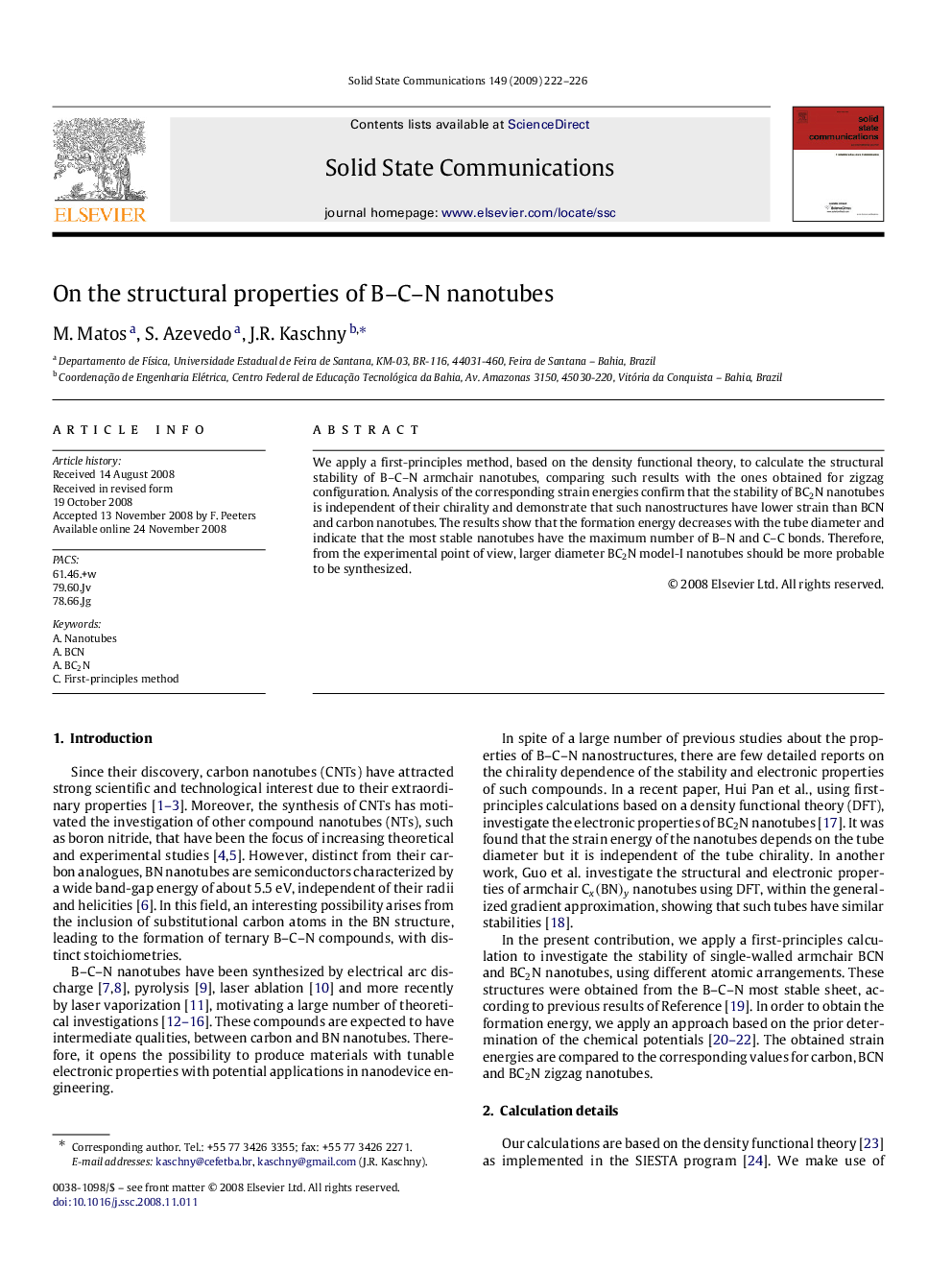| Article ID | Journal | Published Year | Pages | File Type |
|---|---|---|---|---|
| 1595191 | Solid State Communications | 2009 | 5 Pages |
Abstract
We apply a first-principles method, based on the density functional theory, to calculate the structural stability of B–C–N armchair nanotubes, comparing such results with the ones obtained for zigzag configuration. Analysis of the corresponding strain energies confirm that the stability of BC2N nanotubes is independent of their chirality and demonstrate that such nanostructures have lower strain than BCN and carbon nanotubes. The results show that the formation energy decreases with the tube diameter and indicate that the most stable nanotubes have the maximum number of B–N and C–C bonds. Therefore, from the experimental point of view, larger diameter BC2N model-I nanotubes should be more probable to be synthesized.
Related Topics
Physical Sciences and Engineering
Materials Science
Materials Science (General)
Authors
M. Matos, S. Azevedo, J.R. Kaschny,
